 Sat./Sun. Nov. 8 & 9
Sat./Sun. Nov. 8 & 9
9:30am to 3:00 pm
Not to be Missed!
Find artisan jewelry, stylish shoes, clothing and accessories, local artisan and other special art and craft pieces, antiques, linens, kitchen stuff, CDs, books.
You never know what you’ll discover from Eve’s personal collection! Eve has spent her life as a treasure hunter, seeking beauty, quality, authenticity and value, in every realm, from experiences to plants to art to earrings! Bring your friends!
CASH ONLY![Read More]

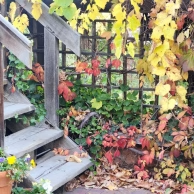 I confess. I am definitely a plant hoarder. Every year, I amass a formidable collection of plant starts, and then spend evenings through the season walking around my garden, little pots in hand, trying to find a few square inches where I can fit them in. Then I make tags and put them in the spots I’ve found (or created by taking some other plant out). If the critters don’t pull them out, most of those tags wait months for the magical moment when the weather is mild enough for me to plant them – October at last!
I confess. I am definitely a plant hoarder. Every year, I amass a formidable collection of plant starts, and then spend evenings through the season walking around my garden, little pots in hand, trying to find a few square inches where I can fit them in. Then I make tags and put them in the spots I’ve found (or created by taking some other plant out). If the critters don’t pull them out, most of those tags wait months for the magical moment when the weather is mild enough for me to plant them – October at last!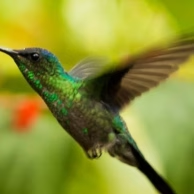 All summer and fall, Mikl and I have been collecting seeds from our own gardens and from wildlands where we have collecting permits, and at this point, most of that collecting is done. After spending last Sunday cataloging our seed collections, I’m delighted to report that so far, we have collected at least 85 species, most of them local natives. We can’t sell you the seeds we collect (the USDA won’t allow it), and besides, we need them for growing our plants for you. But we have excellent wildflower seed mixes from BBB Seeds in Boulder.
All summer and fall, Mikl and I have been collecting seeds from our own gardens and from wildlands where we have collecting permits, and at this point, most of that collecting is done. After spending last Sunday cataloging our seed collections, I’m delighted to report that so far, we have collected at least 85 species, most of them local natives. We can’t sell you the seeds we collect (the USDA won’t allow it), and besides, we need them for growing our plants for you. But we have excellent wildflower seed mixes from BBB Seeds in Boulder.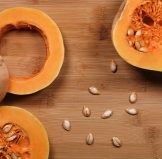
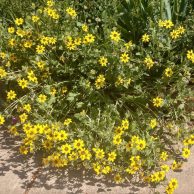


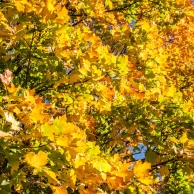
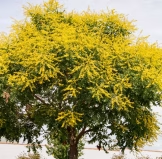

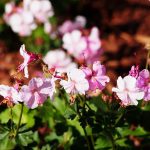



 Our staff have been restocking bulbs, and a few favorites have emerged! Mid–October to mid-November is the right time to plant them. Come in this weekend as they’re going fast! We have a curated collection of flowering Allium, Narcissus (daffodils), Crocus, Tulips, and more!
Our staff have been restocking bulbs, and a few favorites have emerged! Mid–October to mid-November is the right time to plant them. Come in this weekend as they’re going fast! We have a curated collection of flowering Allium, Narcissus (daffodils), Crocus, Tulips, and more!






 Our Fall Sale Keeps Getting Better!
Our Fall Sale Keeps Getting Better!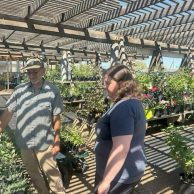 Our Fall Sale Keeps Getting Better!
Our Fall Sale Keeps Getting Better! It’s the First Week of our 2025 Fall Sale! Start Saving Saturday!
It’s the First Week of our 2025 Fall Sale! Start Saving Saturday! By Eve Reshetnik Brawner
By Eve Reshetnik Brawner A cornucopia of stunning, hardy bulbs will be arriving in August and early September at Harlequin’s, so get ready! Now is a great time to peruse our list (at the link below) and to look at your garden to identify areas where you can add fall-planted bulbs for (mostly) spring blooms (a few special Crocus and Colchicum bloom later in the fall!). Consider the gentle drama of a drift of mixed daffodils (Narcissus) that bloom from early to late spring
A cornucopia of stunning, hardy bulbs will be arriving in August and early September at Harlequin’s, so get ready! Now is a great time to peruse our list (at the link below) and to look at your garden to identify areas where you can add fall-planted bulbs for (mostly) spring blooms (a few special Crocus and Colchicum bloom later in the fall!). Consider the gentle drama of a drift of mixed daffodils (Narcissus) that bloom from early to late spring





 When we garden with a mission of sustainability, driven by our conviction that plant (and all) life depends on vibrant soil health, we don’t always realize that we’re part of an alternative lineage grounded in an understanding that everything is deeply connected.
When we garden with a mission of sustainability, driven by our conviction that plant (and all) life depends on vibrant soil health, we don’t always realize that we’re part of an alternative lineage grounded in an understanding that everything is deeply connected. This is your best chance for big savings on healthy, highly desirable, container-grown trees that are very successful in our challenging Colorado conditions! We grew these healthy ‘seconds’ ourselves since they were little babies, in our own soil formulas and without any chemicals, in #5 (5-gallon) pots and larger. The only difference between these and their full-price counterparts is that the sale plants are a little shorter or slightly less full.
This is your best chance for big savings on healthy, highly desirable, container-grown trees that are very successful in our challenging Colorado conditions! We grew these healthy ‘seconds’ ourselves since they were little babies, in our own soil formulas and without any chemicals, in #5 (5-gallon) pots and larger. The only difference between these and their full-price counterparts is that the sale plants are a little shorter or slightly less full. Rosa nutkana
Rosa nutkana
 Fire is on our minds. How to prevent it. How to curtail or control it. How to live with it. How to use it constructively. We remember the early winter Marshall Fire at the end of 2021 with feelings of grief and
Fire is on our minds. How to prevent it. How to curtail or control it. How to live with it. How to use it constructively. We remember the early winter Marshall Fire at the end of 2021 with feelings of grief and Time flies, don’t you think? Do you remember when people throughout the “developed world” anxiously awaited the arrival of the new millennium, worried by predictions that Y2K would bring a collapse of technical systems – the internet, banking, stock trading, communications – and throw everything else into chaos? And there was nothing we could do about it? It didn’t take long to see that the world as we knew it did not fall apart. Twenty-five years later, perhaps you’ve been nervously awaiting the advent of 2025 and are scared of what the new year, on many fronts, could bring. Completely understandable!
Time flies, don’t you think? Do you remember when people throughout the “developed world” anxiously awaited the arrival of the new millennium, worried by predictions that Y2K would bring a collapse of technical systems – the internet, banking, stock trading, communications – and throw everything else into chaos? And there was nothing we could do about it? It didn’t take long to see that the world as we knew it did not fall apart. Twenty-five years later, perhaps you’ve been nervously awaiting the advent of 2025 and are scared of what the new year, on many fronts, could bring. Completely understandable! These are native plants that we often have for sale during the growing season. Availability does change every year, but we grow and buy a wide variety of natives because they are so successful in our gardens.
These are native plants that we often have for sale during the growing season. Availability does change every year, but we grow and buy a wide variety of natives because they are so successful in our gardens. Pruning is the art and science of removing or shortening branches of a tree or shrub. If done correctly, it can prevent breakage, increase beauty and increase flowering and fruiting. To learn how to make a healthy cut, study the Shigo method of pruning, or come to one of Mikl’s pruning classes.
Pruning is the art and science of removing or shortening branches of a tree or shrub. If done correctly, it can prevent breakage, increase beauty and increase flowering and fruiting. To learn how to make a healthy cut, study the Shigo method of pruning, or come to one of Mikl’s pruning classes. If you’re baking a delicious pumpkin pie, or making a warming squash soup, don’t throw away the seeds.
If you’re baking a delicious pumpkin pie, or making a warming squash soup, don’t throw away the seeds. Are you ready to add new plants to your indoor garden this season? Our selection is excellent, with plants to suit a variety of light conditions. Did you know that winter is the dormant season for most of the non-blooming tropical plants that we grow as houseplants? We’ve assembled some tips to help them thrive in our dry indoor conditions.
Are you ready to add new plants to your indoor garden this season? Our selection is excellent, with plants to suit a variety of light conditions. Did you know that winter is the dormant season for most of the non-blooming tropical plants that we grow as houseplants? We’ve assembled some tips to help them thrive in our dry indoor conditions.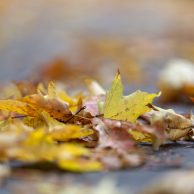 by Dan Brawner
by Dan Brawner
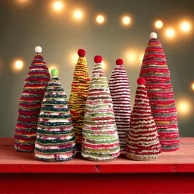 Here we are in the season of giving generously. Not all of us can afford to give lavishly, but even the humble gift of seeds can create enormous abundance. We’re talking about both literal and figurative seeds here.
Here we are in the season of giving generously. Not all of us can afford to give lavishly, but even the humble gift of seeds can create enormous abundance. We’re talking about both literal and figurative seeds here. The more challenging life becomes, the more I remind myself of what’s good and beautiful and wondrous and nourishing in life, what I can be deeply grateful for and what I will stick my neck out to protect. The list is long!
The more challenging life becomes, the more I remind myself of what’s good and beautiful and wondrous and nourishing in life, what I can be deeply grateful for and what I will stick my neck out to protect. The list is long! Eve’s “Embarrassment of Riches” Garage Sale Is Delayed
Eve’s “Embarrassment of Riches” Garage Sale Is Delayed
 At this time of year, many of you probably share with me the bittersweet feeling of closure drawing near. It’s been another immensely rewarding growing season at Harlequin’s, and we are so grateful to have had the opportunity to introduce hundreds of new Colorado gardeners to appropriate and successful materials and methods, as well as helping so many longtime, like-minded sustainable gardeners. For 32 years we have been providing pollinator-safe Colorado-appropriate plants, products, information and advice based on our ongoing research and long experience, and we look forward to carrying this service well into the future. Thank you all for your support! But we’ve extended our season and we’re not done yet!
At this time of year, many of you probably share with me the bittersweet feeling of closure drawing near. It’s been another immensely rewarding growing season at Harlequin’s, and we are so grateful to have had the opportunity to introduce hundreds of new Colorado gardeners to appropriate and successful materials and methods, as well as helping so many longtime, like-minded sustainable gardeners. For 32 years we have been providing pollinator-safe Colorado-appropriate plants, products, information and advice based on our ongoing research and long experience, and we look forward to carrying this service well into the future. Thank you all for your support! But we’ve extended our season and we’re not done yet!  This week’s warm weather aside, December is the time we cozy up indoors to dream about next season’s garden, and to decide what new techniques to try and which plants to grow. Winter is for gardening books, and we have quite a few in stock that we’d like to suggest for you. Whether you have a book club or just a comfortable chair to curl up into, these titles are sure to fire your imagination.
This week’s warm weather aside, December is the time we cozy up indoors to dream about next season’s garden, and to decide what new techniques to try and which plants to grow. Winter is for gardening books, and we have quite a few in stock that we’d like to suggest for you. Whether you have a book club or just a comfortable chair to curl up into, these titles are sure to fire your imagination.